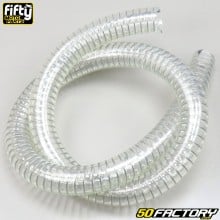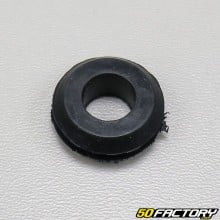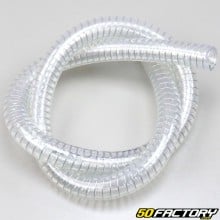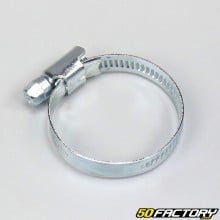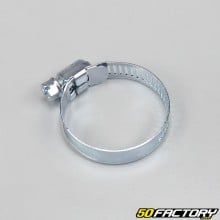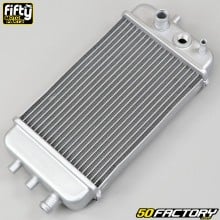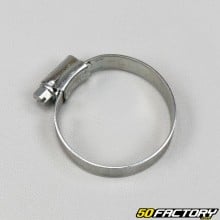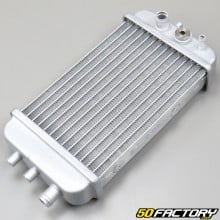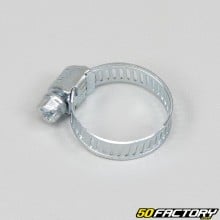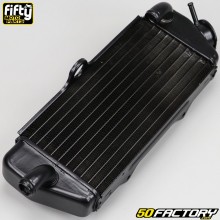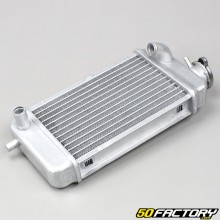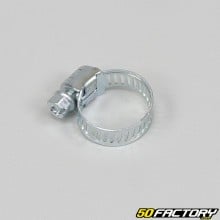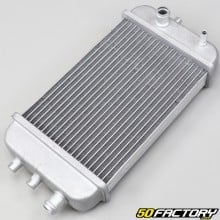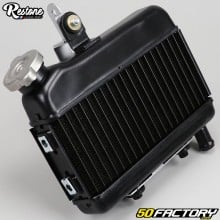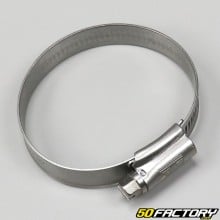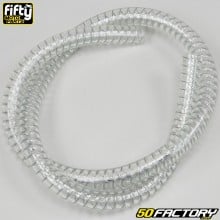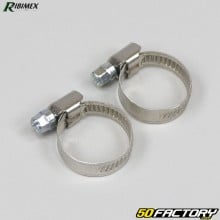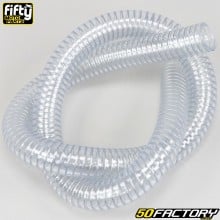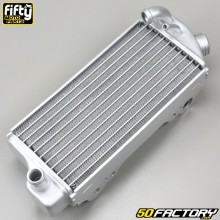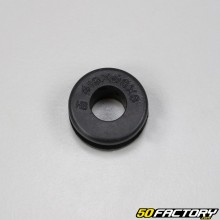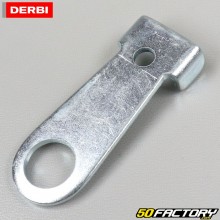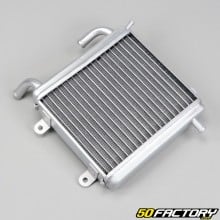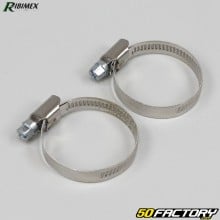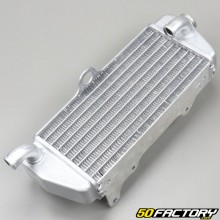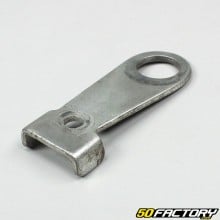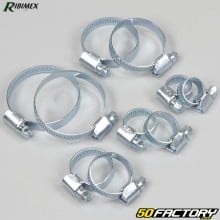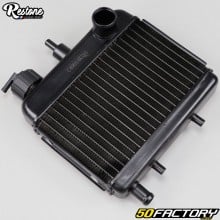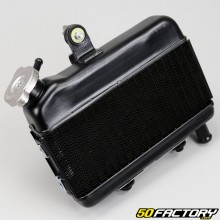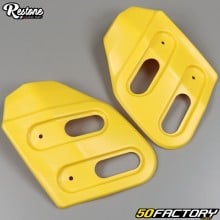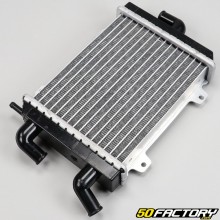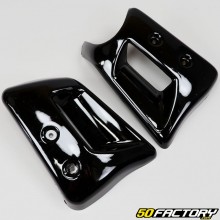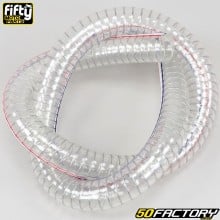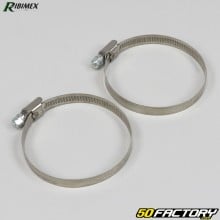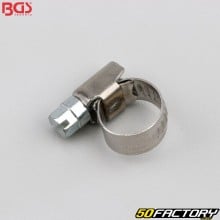 Radiator
Radiator
- IN STOCK14,90 €
- IN STOCK1,60 €
- IN STOCK14,00 €
- IN STOCK1,70 €
- IN STOCK1,70 €
- IN STOCK77,70 €
- IN STOCK75,80 €
- IN STOCK89,80 €
-
- IN STOCK1,70 €
- IN STOCK2,20 €
-
- IN STOCK2,10 €
- IN STOCK59,80 €
- IN STOCK63,00 €
- IN STOCK3,40 €
- IN STOCK79,80 €
-
- IN STOCK1,90 €
- IN STOCK12,60 €
- IN STOCK2,60 €
- STOCK EXHAUSTED17,20 €
- IN STOCK75,90 €
- IN STOCK0,40 €
- IN STOCK5,10 €
- IN STOCK69,20 €
- IN STOCK2,60 €
- STOCK EXHAUSTED104,50 €
- IN STOCK1,90 €
- IN STOCK79,80 €
- IN STOCK24,20 €
- IN STOCK1,90 €
- IN STOCK5,70 €
- IN STOCK69,80 €
- IN STOCK64,80 €
- IN STOCK60,00 €
-
- IN STOCK51,90 €
- IN STOCK27,80 €
- IN STOCK17,20 €
- IN STOCK3,00 €
- IN STOCK0,90 €
Understanding the role of the cooling device in a two-wheeler or quad
Le radiator plays a central role in the cooling system of your two-wheeler or quad. It is responsible for efficiently dissipating the heat produced par the engine, thus maintaining its temperature at an ideal level for optimal performance. The proper functioning of this essential part is therefore crucial to prevent engine overheating and ensure the longevity of your vehicle.
Without a functioning cooling system, the engine is at high risk of overheating, which can cause significant damage and potentially lead to failure. This is why it is vital to choose a quality part and ensure regular maintenance.
Additionally, it is important to understand that not all cooling devices are the same. They vary depending on the material of construction, type of cooling and configuration. It is therefore crucial to choose the type of element that best suits your vehicle and your specific needs. Par For example, a liquid-cooled radiator may be more efficient in demanding driving conditions, while a p-cooled elementar air can be easier and less expensive to maintain.
In short, the choice and maintenance of a cooling system are key aspects to guarantee the performance and durability of your two-wheeler or quad. This is why at 50 Factory, we would like to provide you with all the necessary information to help you understand the crucial role of the cooling system and make the best choice for your vehicle.
Pour plus d'informations sur le engine cooling, remember to consult our guide.
The different types of radiators
There are different types of cooling devices for motorcycles, scooters and quads, each with its own characteristics and advantages. These systems can be classified according to the material used (aluminum, steel, etc.), the type of cooling (air, liquid, etc.) or even the configuration (single, twin cylinder, etc.).
Liquid cooling systems, on the other hand, use a combination of water and antifreeze to cool the engine. These devices are generally more efficient than their air-powered counterparts, but they are also more complex and expensive to maintain.
Another detail to consider is the configuration of the device. There are models with a single heat exchanger (mono) and others with two heat exchangers (bi). Mono models are simpler and less expensive, while dual models offer better heat dissipation, but are more expensive and require more regular maintenance.
It is also worth noting that certain types of vehicles are more suitable for certain types of cooling systems. Par For example, high-performance racing motorcycles and quads can benefit from the use of a liquid-cooled device for better heat management, despite the higher maintenance cost.
Le universal cooler positioned between two water hoses, offers the possibility of adding a small additional "radiator" to your cooling system. To improve its efficiency, it is advisable to leave it visible so that air can circulate adequately between the cooling fins. Perfect for a competition or simply for daily use of your two wheels.
Comparison of the advantages and disadvantages of each type
As mentioned earlier, each type of system has its advantages and disadvantages. Air systems are more economical and easier to maintain, but are not as effective as liquid systems under demanding driving conditions. The latter, although more expensive and complex to maintain, offer better heat dissipation and are therefore preferable for high-performance motorcycles or harsh riding conditions.
As for mono and dual systems, the choice will depend on your needs in terms of performance and budget.get. A mono model may be sufficient for normal use, while a dual will be more efficient but also more expensive to purchase and maintain.
Choosing the Right Type for Your Vehicle
It is essential to understand the specifics of your vehicle and your driving style before choosing a type of cooling system. Consider your engine power, the frequency and intensity of your driving, and your budget for the purchase and maintenance of the device. Remember, the goal is to ensure optimal heat dissipation to keep your engine at ideal temperature and extend the life of your vehicle.
The selection criteria for your vehicle
The choice of a cooling device depends on several criteria, including the type of vehicle, the use you make of it, your budget and your maintenance preferences. Here are some things to consider:
Brand, model, thermal performance, maintenance, price...
The make and model of the cooling element is important, not only in terms of compatibility with your vehicle, but also in terms of quality and reliability. It is preferable to choose a brand device recognized for its durability and thermal performance.
The type of cooling (air or liquid) and the configuration (mono or dual) must also be taken into account. As mentioned earlier, each type has its advantages and disadvantages, and your choice will largely depend on your specific needs and preferences.
Price is of course an important factor, but quality should not be neglected for short-term savings. A cheap radiator may end up par cost you more in terms of maintenance and replacement.
Additional considerations
Apart from these criteria, it is also important to take into account the ease of installation of the device. Some models are easier to install than others, which can be an advantage if you plan to install it yourself. Additionally, the dimension of the cooling element must be compatible with the space available in your vehicle, to avoid fit issues.
The reputation of the manufacturer can also be a good indicator of product quality. So it's a good idea to research other users' experiences with the make and model you're considering purchasing.
The energy efficiency of the cooling element is another factor to consider. An efficient radiator will use less energy, which can help you save on your energy bills and help protect the environment.
Finally, we must take into account the aspect of maintenance. Liquid-cooled devices require more regular maintenance than air-cooled ones, but generally offer better performance. Likewise, a twin-cylinder element will require more maintenance than a single, but will provide more efficient heat dissipation. It is therefore essential to evaluate the time and resources you are willing to devote to maintaining your cooling device before making your choice.
Importance of regular maintenance
Regardless of the type of cooling equipment you choose, regular maintenance is essential to keep it running smoothly and extend its lifespan. This involves regularly checking the level of coolant, clean the fins to remove dust and debris that could interfere with heat dissipation, and check the condition of the gasket and fan.
Particular care should be taken when checking this device, car A coolant leak can cause the engine to overheat and cause serious damage.
Beyond these basic elements, it is also recommended to regularly perform a visual inspection of your radiator. Look for obvious signs of corrosion or damage that could affect its effectiveness. If you spot traces oxidation or leaks, it's time to consider a replacement.
It's also a good idea to monitor your engine temperature. If you notice constant overheating, this could indicate a problem with the cooling system that is failing to effectively cool the engine. A professional interview may be necessary in this case.
Finally, remember that regular maintenance of this component is not only a question of performance, but also of safety. A faulty cooling system can cause the engine to overheat, potentially dangerous. In short, a well-maintained cooling system means a safer and more reliable two-wheeler or quad.
The different brands available on the market
At the time of replacement, the choice of an adaptable or original radiator may also arise.
Manufacturer brands generally offer replacement radiators. Among the most popular are KTM, Yamaha, Honda and Suzuki, which offer high quality devices designed for their own vehicle models. There are also brands specializing in cooling systems for all types of vehicles which offer a wide range of replacement products.
It should be noted that some of these brands stand out par their commitment to innovation, by developing ever more efficient cooling technologies. Additionally, some brands, like IROD or Quad Racing, are particularly recognized for their expertise in the field of two-wheelers and quads, which is reflected in the quality and performance of their cooling systems.
It is also important to note that each brand has its own specificities in terms of assembly and maintenance, and therefore it is essential to find out about these aspects before purchasing. Finally, it is recommended to turn to trusted distributors, who offer quality products and top-notch customer service.
Installation and replacement
Installing or replacing a cooling device is a relatively simple task, but one that requires mechanical knowledge. In addition, as it is an essential part for the proper functioning of the engine, it is recommended to entrust this task to a professional if you are not sure you can carry it out correctly. In addition, handling the coolant must be done with caution, car the latter can be toxic in case of contact with skin or eyes.
Precautions to take before installation
Before proceeding with the installation or replacement of the cooling system, it is important to take certain precautions. First of all, it is recommended to work in a well-ventilated area and to wear gloves and protective glasses to avoid contact with the coolant. Then, it is best to disconnect the battery from the vehicle to avoid any risk of short circuit. Finally, make sure you have all the necessary tools on hand to make installation easier.
Step-by-step guide for successful installation
Here is a step-by-step guidear step for installing a radiator:
- Disconnect the vehicle battery
- Remove the existing cooling assembly by unscrewing the fasteners and disconnecting the hoses
- Install the new radiator by fixing it to the supports provided for this purpose
- Reconnect the hoses to the new cooling device
- Fill the new cooling system with liquid to the recommended level par the manufacturer
- Reconnect the battery and start the engine to verify that the new cooling system is working properly.
After installation
Once installation is complete, it is recommended to regularly check the coolant level and the condition of the device to ensure proper operation. If you notice a drop in the fluid level or the engine is overheating, this may indicate a problem with the cooling system that requires immediate attention.
Conclusion: The importance for the performance and durability of your two-wheeler or quad
To conclude, this cooling element is an essential part which contributes to the performance and longevity of your two-wheeler or quad. A judicious choice of this component, regular maintenance and timely replacement will ensure the proper functioning of your vehicle and allow you to make the most of your rides or competitions.
Investing in a quality cooling system is a long-term investment for your vehicle. It not only guarantees better performance, but also greater durability. Indeed, a high quality part can extend the life of your engine by avoiding overheating problems.
It is also important to emphasize the importance of regular maintenance of this equipment. Proper and regular maintenance can prevent problems before they turn into costly breakdowns. This includes checking the coolant level, cleaning the fins to remove debris, and checking the condition of the fan and seals.
Remember to check the other cooling categories to find all your parts: radiator cap, radiator hose , coolant, water pump, probe and thermostat, expansion tank.
























